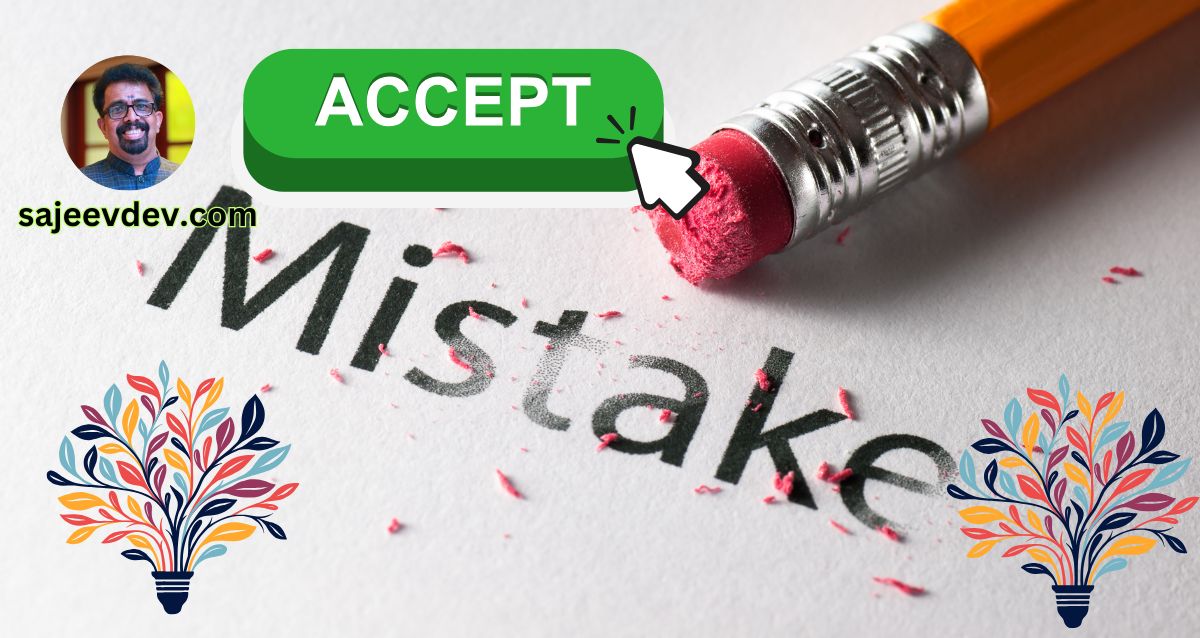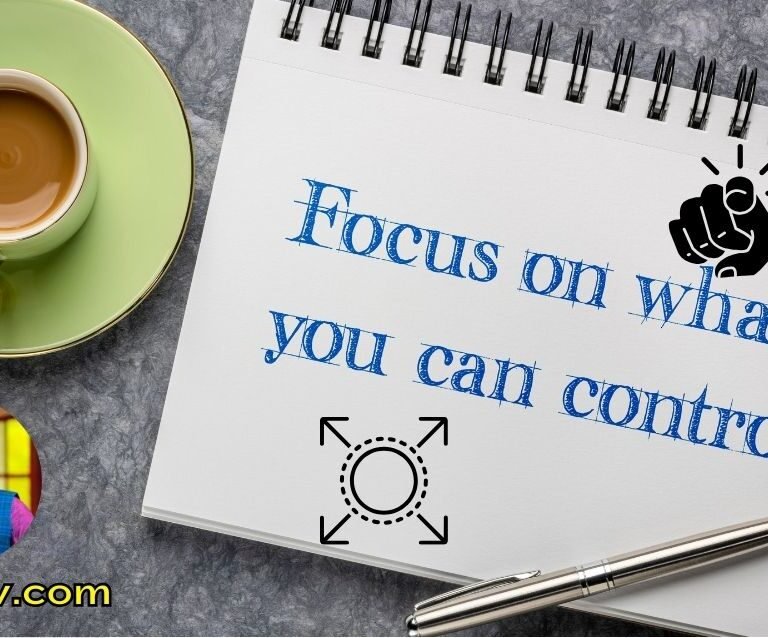Mistakes and Growth
Albert Einstein famously stated, “A person who never made a mistake never tried anything new.” This poignant observation encapsulates the intrinsic relationship between errors and personal growth. Mistakes, often perceived negatively, actually serve as vital stepping stones in the journey of innovation and self-improvement. Each misstep presents an opportunity to analyze, adapt, and excel in future endeavors, reinforcing the notion that making mistakes is an essential facet of the learning process.
When individuals step outside their comfort zones to try new approaches or ideas, they inevitably encounter mistakes along the way. These errors, while initially disheartening, offer invaluable lessons that contribute to a deeper understanding of a subject or skill. Through trial and error, individuals refine their methodologies, discover innovative solutions, and enhance their overall competence. It is this willingness to embrace mistakes that fosters an environment where creativity and experimentation thrive.
In the context of both personal and professional development, recognizing the importance of mistakes is crucial. They encourage resilience and adaptability as individuals learn to navigate through failure. Moreover, mistakes can spark creativity; they compel individuals to think outside the box and explore uncharted territories. This exploration often leads to unique insights and breakthroughs that may not have materialized without the influence of failure. Therefore, it is essential to shift our perception of mistakes from something to be feared to a necessary component of growth and evolution.
By acknowledging that mistakes are an inherent aspect of trying new things, we can cultivate a mindset that promotes learning, improvement, and innovation. Embracing this concept paves the way for both personal development and societal advancement, allowing us to push boundaries and achieve remarkable outcomes in various fields.
Understanding Einstein’s Philosophy
Albert Einstein, widely celebrated for his groundbreaking contributions to physics, held a distinctive perspective on mistakes that profoundly influenced his innovative approach to science and creativity. Through his experiences, Einstein suggested that errors are not merely failures but are integral to the process of discovery and learning. He believed that each mistake presents an opportunity for growth and greater understanding, particularly in a field as complex as theoretical physics, where conventional wisdom often falls short.
Einstein famously stated, “A person who never made a mistake never tried anything new.” This assertion underscores the importance of stepping outside one’s comfort zone. He viewed failure as a critical element in the journey toward success. Such a mindset allowed him to embrace the ambiguity and uncertainty inherent in scientific exploration. Einstein’s own career was marked by trials and errors; he faced skepticism and resistance from established scientific communities when proposing radical ideas such as the theory of relativity. Nevertheless, he remained undeterred, showcasing his belief that mistakes can lead to revolutionary breakthroughs.
Moreover, Einstein’s approach was also tied to a broader understanding of creativity. He argued that creative thinking often entails the willingness to entertain unorthodox ideas, acknowledging that mistakes are an unavoidable aspect of this cognitive process. This perspective has significant implications for innovation; by reimagining mistakes as opportunities for insight, individuals and organizations can foster an environment that nurtures experimentation and, ultimately, progress.
In essence, Einstein’s philosophy illustrates that embracing mistakes is crucial for cultivating a culture of innovation. The lessons learned from setbacks enhance resilience and problem-solving capabilities, vital attributes in both scientific inquiry and creative endeavors. His legacy serves as a testament to the notion that each misstep can illuminate the path to new ideas and discoveries.
The Psychology of Fear and Failure
The interplay between fear and failure significantly influences the human psyche, often serving as a deterrent to innovation and personal growth. Many individuals grapple with an inherent fear of judgment, which stems from societal expectations and personal experiences. This apprehension can lead to reluctance in pursuing new ideas or stepping out of one’s comfort zone. The fear of being criticized for one’s choices can stifle creativity, rendering individuals passive and less likely to attempt innovative solutions in both personal and professional contexts.
Another psychological barrier often encountered is perfectionism. Those who possess high standards for themselves may avoid risks altogether, fearing that any misstep could lead to failure, which they perceive as a reflection of their worth. Perfectionists may struggle to appreciate incremental progress, focusing instead on an unrealistic ideal. This mindset creates a vicious cycle, where the avoidance of failure ultimately results in stagnation and unfulfilled potential.
Additionally, societal pressures can exacerbate these fears. In cultures that prioritize success and achievement, the stigma associated with failure can become amplified, leading individuals to internalize the notion that mistakes are unacceptable. Such societal norms may discourage experimentation and vulnerability, further perpetuating an environment where creativity is not nurtured. As a result of these mental barriers, the opportunity for learning from failures diminishes, leaving individuals ill-equipped to engage in innovative pursuits.
In recognizing these psychological factors, it becomes evident that fostering a healthy perception of failure is essential. Acknowledging that mistakes are a natural component of the learning process can empower individuals to confront their fears and embrace the possibilities that come with experimentation. This shift in mindset is key to unlocking potential and achieving growth through innovation.
Case Studies: Innovators Who Embraced Mistakes
Throughout history, countless innovators have demonstrated that embracing mistakes can be a powerful catalyst for creativity and growth. One notable example is Thomas Edison, widely regarded as one of America’s greatest inventors. His journey to creating the electric light bulb was not without its failures. In fact, Edison famously stated, “I have not failed. I’ve just found 10,000 ways that won’t work.” This perspective allowed him to persist through numerous setbacks, ultimately leading to his groundbreaking achievement that transformed the world and paved the way for modern electric lighting.
Another iconic figure, Steve Jobs, exemplifies the importance of learning from errors. After being ousted from Apple, the company he co-founded, Jobs faced a major turning point in his career. Rather than succumbing to defeat, he founded NeXT and acquired Pixar, which flourished under his leadership. This period of trial and error ultimately enriched Jobs’ vision when he returned to Apple, leading to revolutionary products like the iPod and iPhone. His experience illustrates how setbacks can be instrumental in refining one’s approach to innovation.
J.K. Rowling is yet another testament to the value of mistakes in the journey to success. Before publishing the wildly popular Harry Potter series, Rowling faced numerous rejections from publishers. Instead of allowing these setbacks to deter her, she viewed them as a necessary part of her process. Her perseverance, fueled by her belief in her story and characters, eventually led to the global phenomenon that captivated millions. Rowling’s journey reflects how embracing her failures played an essential role in shaping her ultimate success.
These cases exemplify the idea that mistakes are not merely obstacles but essential building blocks for innovation and growth. By embracing failure, innovators like Edison, Jobs, and Rowling have transformed their setbacks into significant breakthroughs, paving the way for future generations.
The Role of a Growth Mindset
The concept of a growth mindset, introduced by psychologist Carol Dweck, is pivotal in understanding how attitudes toward mistakes can influence personal and professional development. A growth mindset is characterized by the belief that abilities and intelligence can be developed through dedication, effort, and a willingness to learn. This perspective contrasts sharply with a fixed mindset, where individuals perceive their abilities as static and unchangeable. Embracing a growth mindset encourages individuals to view challenges and mistakes not as obstacles, but as essential components of the learning process.
When individuals adopt a growth mindset, they become more resilient in the face of setbacks. Mistakes are reframed as important opportunities for growth rather than definitive failures. For instance, an employee who encounters a setback on a project may initially feel discouraged. However, with a growth mindset, they would analyze the situation, seek to understand what went wrong, and utilize that knowledge to improve future efforts. This approach fosters an environment where innovation can thrive, as individuals are less afraid to take risks and venture into untested territories, recognizing that mistakes are integral to discovering new solutions.
Moreover, a growth mindset promotes a culture of continuous improvement within teams and organizations. When team members support one another in learning from mistakes, it enhances collaboration and knowledge sharing. This collaborative environment emphasizes that everyone’s contributions are valuable and that learning is a shared journey. By normalizing the idea that errors are part of the process, organizations can cultivate a workforce that is not only engaged but also motivated by the prospect of innovation. In essence, embracing a growth mindset permits individuals to break free from the limitations imposed by fear of failure, empowering them to pursue ambitious goals and ultimately driving personal and organizational growth.
Practical Tips for Embracing Mistakes
Embracing mistakes is a critical aspect of fostering innovation and personal growth. There are several strategies individuals can adopt in their daily lives to facilitate this process. One effective approach involves actively soliciting and learning from criticism. By seeking feedback from others, individuals can gain different perspectives on their actions and decisions. Constructive criticism should be viewed as a valuable tool for improvement rather than a personal attack. This mindset fosters resilience and encourages continuous learning.
Another practical tip is to take on new challenges regularly. Venturing outside of one’s comfort zone opens the door to experiencing failure, which can ultimately lead to significant growth. For instance, engaging in unfamiliar tasks or pursuing new hobbies can provide invaluable insights, helping individuals recognize their areas of strength and weakness. Each challenge presents a unique opportunity to learn and adapt, reinforcing the idea that mistakes are integral to the learning process.
Creating a safe environment for experimentation is also vital. This can be achieved by cultivating a culture that embraces risk-taking without fear of punitive repercussions. In professional settings, leaders should encourage team members to share their ideas, even if they may lead to mistakes. When team members feel secure expressing themselves, innovation flourishes, as they are more willing to test new concepts without the threat of failure looming over them.
Additionally, reflection plays a crucial role in embracing mistakes. Taking time to analyze experiences, whether successful or not, allows individuals to identify valuable lessons. Journaling or discussing these reflections with peers can lead to deeper insights and a greater understanding of the factors that contributed to mistakes. By doing so, individuals can transform setbacks into stepping stones, ultimately guiding them toward greater innovation and growth.
Mistakes in the Workplace: A Culture of Innovation
In contemporary work environments, fostering a culture where mistakes are perceived as integral to the innovation process is increasingly essential. Establishing such a culture can lead to significant enhancements in creativity and employee engagement. Encouraging staff to experiment and take calculated risks often leads to unexpected solutions and inventive ideas, driving the organization forward. When employees feel safe to explore, they are more likely to contribute their unique perspectives, ultimately enriching the organization’s problem-solving capabilities.
A workplace that embraces mistakes typically promotes open dialogue among its members, facilitating an atmosphere where individuals can discuss failures candidly. This promotes learning from past experiences and encourages shared knowledge among colleagues. Instead of fearing repercussions, employees should feel empowered to push boundaries, knowing that experimentation may yield valuable insights. Such initiatives stimulate personal and collective growth, reinforcing the understanding that mistakes are not merely failures but stepping stones to success.
The psychological safety found in a supportive work environment fosters resilience and adaptability among employees. These attributes are critical in today’s rapidly evolving professional landscape, where change is constant. Moreover, when organizations do not penalize errors, they nurture a sense of loyalty and commitment among their workforce. This increased job satisfaction can reduce turnover rates while simultaneously enhancing productivity, as employees are motivated to contribute freely to group efforts, enriching overall company performance.
In essence, cultivating a culture that appreciates the value of mistakes catalyzes innovation and growth. Organizations that encourage this mindset can unlock significant potential, leading to a robust and dynamic workforce ready to meet the challenges of the future.
Reframing Failure as Feedback
Embracing the concept of failure as a mere stepping stone toward success can profoundly transform individual and organizational mindsets. When characterized merely as a defeat, failure often leads to demoralization and stagnation. However, by reframing failure as constructive feedback, one can cultivate a learning-oriented approach that encourages innovation and growth. This perspective allows individuals to dissect their mistakes, identify underlying issues, and extract valuable insights that can greatly inform future actions.
One effective strategy for reframing failure is to implement a reflective practice. After encountering a setback, take the time to analyze what went wrong and why. This might involve asking questions such as, “What were the contributing factors?” and “What could have been done differently?” By engaging in this self-reflection, you create a framework where mistakes become powerful teachers. This translates to actionable lessons that guide future decision-making processes.
Moreover, fostering a culture of open communication is vital. When teams feel comfortable discussing their failures without fear of retribution, they are more likely to share their learnings. This openness not only enhances collective wisdom but also builds trust among team members. As they engage in dialogues about failures, individuals begin to see that shared experiences can catalyze solutions, improving overall team performance.
In professional settings, it is beneficial to formalize this feedback loop by encouraging regular review sessions. These sessions should focus not only on successes but also on identifying failures and their respective lessons. By integrating failure analysis into routine meetings or performance reviews, organizations effectively demonstrate that mistakes are not endpoints but integral elements of the innovation process.
The Value of Trying and Failing
Reflecting on the journey of innovation and growth, it becomes evident that mistakes are not merely obstacles, but vital stepping stones towards success. Albert Einstein’s poignant observation about making more mistakes aligns closely with the realities of progress in various endeavors. Embracing the concept of trial and error lays the groundwork for true learning, fostering an environment where creativity can thrive. The willingness to venture into the unknown, despite the inherent risks of failure, can lead to remarkable breakthroughs and discoveries.
Throughout the discussion, we have highlighted that taking risks and making mistakes are intertwined with the fabric of growth. Each misstep provides an opportunity to analyze the circumstances, learn valuable lessons, and refine future strategies. This cycle of trying, failing, and adapting contributes to resilience, nurturing a mindset that views challenges with optimistic curiosity rather than fear of failure. It encourages individuals and organizations alike to view failures as lessons, rather than setbacks, thus cultivating a culture of continuous improvement.
Encouraging this open-minded approach not only enhances personal development but also stimulates innovation within teams and organizations. As we navigate an increasingly complex world, those who dare to try new approaches, albeit with the risk of stumbling, are often the ones who pave the way for significant advancements. In essence, every mistake carries within it the potential for a lesson that can inform future endeavors.
In conclusion, let us embrace the inherent value of trying and failing. By adopting a fearless mindset and recognizing the lessons embedded in our missteps, we can propel ourselves forward on the path of innovation, ultimately drawing closer to our goals and aspirations. The journey may be fraught with challenges, but the rewards of perseverance and growth make it worthwhile.









